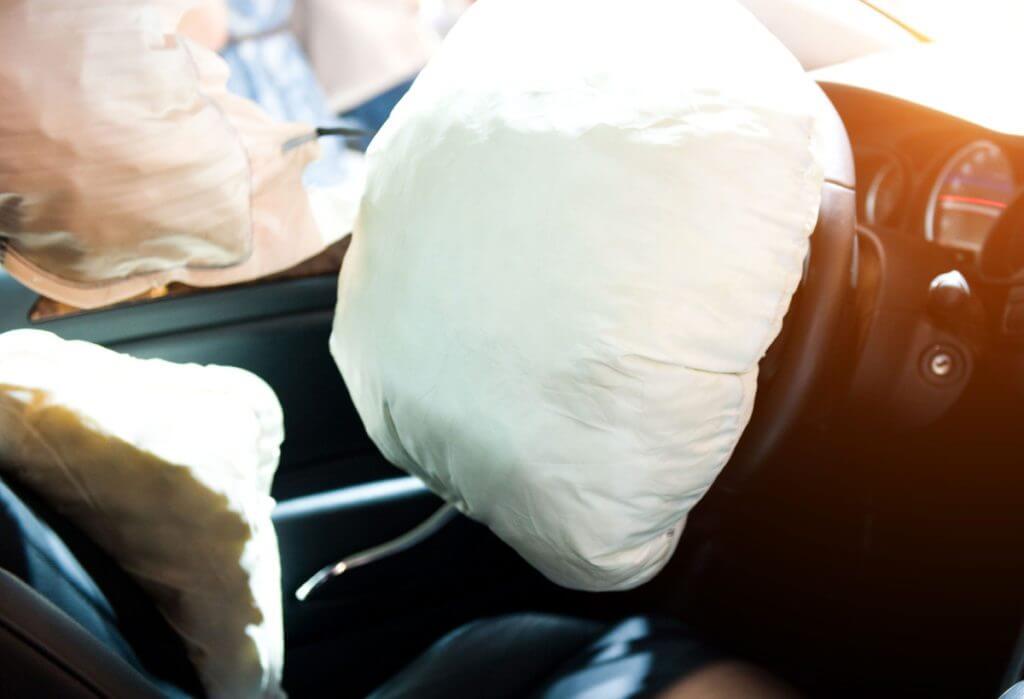No man is rich enough to buy back his past – Oscar Wilde
Airbag recall strikes automotive consumers
Japan-based Takata Corporation (Takata) which started off as a textile manufacturer and supplied parachutes to the Japanese Army during World War II, has filed for bankruptcy in the U.S. and protection with the Tokyo district, on June 26, 2017. This turned out to be the biggest-ever bankruptcy of a Japanese manufacturer – Takata faces billions of dollars in costs and liabilities resulting from almost a decade of airbag recall and lawsuits. The company’s faulty airbag inflators caused multiple deaths and hundreds of injuries since 2003. This was because the company ruptured and sprayed metal fragments on car occupants.
How Takata’s saga unfolded
A series of deaths and injuries associated with defective airbag inflators in 2008 forced Takata to recall. initially recall 3.6 million cars equipped with such airbags. Further, the fatalities caused by the airbags prompted the National Highway Traffic Safety Administration (NHTSA) to order a nationwide recall of over 60 million cars, making it the largest automotive recall in U.S. history. Takata’s reluctance to accept the fault and pin the blame on external factors for the events only exacerbated the problem.
The company had initially blamed auto companies for improper storage and mishandling of propellant chemicals during the assembly stage. Subsequently, Takata blamed the humid weather, rust, and chewing gum dropped in inflators for the slew of deaths and injuries. However, there are allegations that the company allowing a substantial defect rate. Surprisingly, it was six to eight times above the acceptable limits at Takata’s Mexico plant. This sort of negligence raised a question mark on its credibility.
Takata’s gross negligence
Even today, Takata’s management blatantly says that they don’t know why the accidents occurred. Also, the management conveyed that there is no way to portend it during the development stage. However, according to the U.S. Department of Justice (DoJ), the company was aware in the year 2000 that its airbags did not meet the required quality standards, but had concealed that knowledge from automakers and investors. The DoJ even discovered certain e-mails circulated within Takata that contained messages related to the doctoring of test data.
Takata Chairman and CEO Shigehisa Takada’s resolute stand against filing for bankruptcy aggravated the airbag recall issue amid pressure from Japanese carmakers. In January 2017, he contended that the company still had JPY80 billion (US$0.72 billion) in cash and deposits. Adding to this, he said that the company did not foresee the imminent quantum of colossal liabilities. In the wake of a bankruptcy filing, Takata expects to recall about 125 million vehicles globally by 2019. Moreover, cars of automakers with faulty airbags now face the daunting task of bringing the cars to dealers and replacing millions of faulty airbags.
Takata’s response too lame to avert the inevitable
Takata’s initial solution of using desiccants to solve the airbag recall issue was questioned by the US regulators in late 2015. However, the new testing at Takata prompted it to declare 2.7 million of new airbag inflators defective. This raised questions about the risk from replaced airbags, as moisture could still seep into the propellant of some inflators. Adding to its woes, the recent airbag recall in July 2017 were the first one to ever involve bag inflators that use desiccants, thereby making the solution redundant.
According to a recent survey conducted by automotive experts, the addition of a drying agent can reduce, but not eliminate the risk of uncontrolled explosions. Experts also predicted that the recalled parts will eventually be “re-recalled” because ammonium nitrate is too volatile. Discussions with Takata employees revealed that by adding desiccants to airbags, Takata was procrastinating rather than solving the issue. Takata stated that it had produced ~100 million replacement inflators containing drying agents, wherein 2.7 million recalled ones used Calcium Sulfate, while some contained Zeolite. Given the recent turn of events and loss of confidence among the OEMs, Takata now has to prove the safety of desiccated inflators, especially of those equipped with Zeolite.
Airbag recall: A giant now pulled to pieces
Over the last couple of years, mounting recall costs have hurt Takata. This has resulted in its share price plummeting by 99% from January 2014. The company is projected to face liabilities of US$10 billion. According to some, it could reach up to US$50 billion. The final extent of liabilities would depend on the outcome of discussions, if any, with customers who have borne the bulk of the replacement costs. The wide range of the estimate is attributable to the major uncertainties of this process. The airbag recall is only partially completed, and it is difficult to estimate the total cost (currently estimated at ~US$10 billion as mentioned above) or how much victims might be awarded in lawsuits.
And to cover up the costs, Takata had put itself on the block for sale. The company sold its non-airbag operations (seatbelts and steering wheels segments) to Key Safety Systems (KSS). Takata aims to use the sales proceeds of ~US$1.6 billion, to pay down its debts and settle legal claims. A small remnant of Takata would emerge from bankruptcy to make inflators. Consequently, Takata would use them as replacement parts during the airbag recall process, which is being handled by 19 affected automakers. The company hopes to win court approval for its reorganization by the end of March 2018.
Uncertainty over liabilities
The top management will step down once the transfer of assets to KSS is complete. And it is likely that the Takata family will cease to be shareholders. The company has not hammered out any final agreement on airbag recall issues with automakers. The restructured Takata will keep producing Ammonium Nitrate-based airbag inflators through March 2020 for recalls and will then stop making them.
The company, even after selling off assets, is unlikely to pay off its liabilities completely. Furthermore, Takata’s ability to rebuild its relations with automakers is uncertain. Before Takata filed for a bankruptcy, automakers such as BMW, Toyota, Subaru, and Mazda, reached a US$553 million settlement with US lawmakers to settle out class-action economic loss. Honda had recently set aside US$605 million to settle Takata airbag claims, which once approved by the court, will become the biggest settlement pertaining to Takata recalls. Besides this, Subaru has booked a special loss of US$741.5 million over Takata-related recalls in its H1 FY2017 results. However, it would not be surprising if some automakers raised claims against Takata.
Takata’s fading identity
Once a darling of investors (delivered 368% return during the 2009-2013 period), Takata is going through tough times and will soon slip into oblivion. The company’s listing on the Tokyo Stock Exchange in 2006 stood at a market value of US$3.5bn at its pinnacle. The downfall has resulted in the company’s market value eroding to US$20 million. Eventually, Takata’s delisting from the Tokyo Stock Exchange started on July 27, 2017.
According to a 2016 industry report, Takata’s market share stood at 22% in 2014 and 2015. Takata’s market share declined to 17% in 2016 from being once the second largest airbag manufacturer globally. It is forecasted to tumble to 10% by 2020.
Key safety systems positioned at the eye of the cyclone
Key Safety Systems (KSS), a U.S.-based unit of Chinese auto parts manufacturer Ningbo Joyson Electronic Corporation, has acquired Takata, making it the biggest acquisition in Japan by a Chinese-backed company and the second-largest auto-industry buyout by a Chinese company. KSS will certainly be averting airbag recall costs of up to US$9 billion by taking Takata’s operating assets with no liability for its previously manufactured 100 million airbag inflators. Following the successful integration, Ningbo Joyson envisions doubling its sales to US$10 billion by 2021.
Battle begins in Delaware bankruptcy courtroom
Takata is now left to its own fate. However, car companies caught in the effect can visualize the Delaware bankruptcy courtroom as their sword of Damocles. Plaintiffs constituted the official committee to reinforce their voice in the proceedings. Bankruptcies typically only have one official creditors’ committee. In Takata’s case, the committee of injured drivers will sit alongside another one that has suppliers and vendors. The U.S. Trustee’s Office, the arm of the U.S. DoJ that acts as a bankruptcy watchdog, appointed both the committees. The committee’s purpose was to act against Honda Motor, Toyota Motor and other carmakers. Car companies have been trying to use the bankruptcy to limit their liability for installing faulty airbags.
Is jettisoning the way out for Takata?
Takata stated in its Chapter 11 filing that it will create funds to compensate future injuries stemming from the airbags. Firms that go bankrupt due to faulty products often set up such funds and gather contributions from potentially liable parties. These parties in return are shielded from the ongoing litigation. For example, during the bankruptcy of Blitz U.S.A. Inc. (maker of red plastic gas containers) in 2012, a US$161 million fund, which contained US$23 million from Wal-Mart Stores Inc., was set up. The retailer enjoyed protection from lawsuits that it knowingly sold defective gas cans.
Bankruptcy experts opine that “Automakers would likely demand similar legal protections in return for contributing to a Takata fund, and the committee will likely hire experts to challenge those proposals. The committee’s lawyers will probably also want to investigate what car companies knew about the airbags to help determine their liability and their contributions.”
In a recent turn of events, Takata gained some latitude in the form of a 90-day halt in lawsuits brought by Hawaii, New Mexico and the U.S. Virgin Islands, as well as individuals. However, the lawsuit protection did not cover 48 federal cases that span across several districts. This breathing spell will enable Takata to wrap up its sale process, that is crucial for its reorganization.
What does the future hold for Takata and automakers?
To sum up, Takata today has become an unimposing entity following its acquisition by KSS. The main issue that remains is how the company will fund its massive liabilities arising from the massive airbag recall. According to our research, liability funding appears like a distant dream. Only time will tell if the onus falls on its promoters. Investors should watch out for any news on Takata’s key competitors. Especially Autoliv (ALIV: SS) and Toyoda Gosei (7282: JP) should benefit in terms of market share gains.
On the other hand, automakers run the risk of assuming significant liabilities on top of a tarnished reputation. In the aftermath of the bankruptcy, automakers have already factored in potential losses from failing to recover recall related and other expenses from Takata. Toyota Motor (US$5.1 billion), Honda Motor (US$5 billion), Nissan Motor (US$0.8 billion), Mitsubishi Motor and Subaru have expressed concerns about recovering their expenses, and have maintained a bleak outlook. These expenses can be expected to pile up going forward, thus creating additional liabilities for automakers. The whole story implies that Takata’s carmaker customers may again have to buckle up for penalties.









